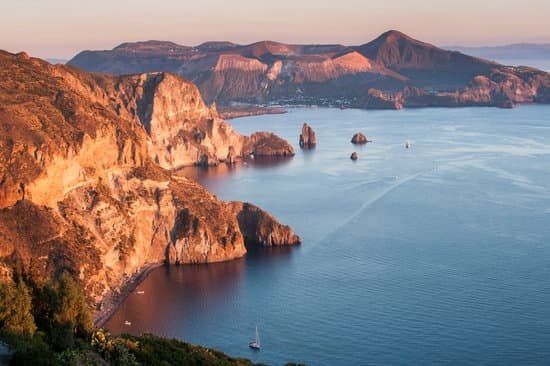Are you wondering what time to travel to Italy? Italy is renowned for its stunning landscapes, rich history, and vibrant culture, making it a must-visit destination for travelers from around the world.
From the ancient ruins of Rome to the picturesque coastlines of the Amalfi Coast, Italy offers a diverse range of experiences for tourists. In this article, we will explore the best time to visit Italy based on weather, seasonal activities, special events, and insider tips to help you make the most of your trip.
Italy experiences a varied climate throughout the country, with different regions having distinct weather patterns. Understanding the seasonal overview of weather and climate in Italy can help travelers plan their trip accordingly. Whether you are interested in sightseeing and cultural exploration or outdoor activities and adventure travel, knowing when to visit can greatly enhance your overall experience in Italy.
In addition to weather considerations, timing your visit to Italy can also revolve around special events and festivals that take place throughout the year. From religious celebrations to food and wine festivals, experiencing these unique cultural events can add an extra layer of excitement to your trip. By understanding when these events occur, you can better plan your itinerary to include these memorable experiences.
Weather and Climate in Italy
Italy enjoys a Mediterranean climate, with hot, dry summers and mild, wet winters. The country experiences four distinct seasons: spring, summer, autumn, and winter. Each season offers something unique for travelers, whether it’s sunny beach days or colorful foliage in the countryside.
Here’s a seasonal overview of the weather and climate in Italy:
- Spring (March to May): Spring is considered one of the best times to travel to Italy for mild temperatures and blooming landscapes. It’s not too hot or too crowded, making it ideal for sightseeing and outdoor activities. The famous cities of Florence and Rome are especially picturesque during this time.
- Summer (June to August): Summer is peak tourist season in Italy, with long hours of sunshine and hot temperatures. Coastal areas like the Amalfi Coast and Sicily are popular destinations for beachgoers during these months. However, expect large crowds and higher prices for accommodations.
- Autumn (September to November): Autumn brings cooler temperatures and fewer tourists to Italy. This is a great time to explore vineyards in Tuscany or attend harvest festivals in the countryside. The weather is still pleasant enough for outdoor activities like hiking and cycling.
- Winter (December to February): Winter in Italy brings chilly temperatures and occasional snowfall, especially in the northern regions. While some attractions may have limited hours or closures during this time, it’s perfect for enjoying winter sports in the Alps or visiting Christmas markets in cities like Venice and Milan.
No matter what time of year you choose to visit Italy, there’s always something magnificent awaiting you amidst its diverse climate and landscape.
Best Time to Visit Italy for Sightseeing and Cultural Exploration
When planning a trip to Italy for sightseeing and cultural exploration, it’s important to consider the best time to visit based on weather, crowds, and the availability of attractions. Here are some recommendations for when to visit Italy for a fulfilling sightseeing and cultural experience:
- Spring (April to June): This is considered one of the best times to visit Italy for sightseeing and cultural exploration. The weather is mild, the flowers are in bloom, and the crowds are not as heavy as they are during the peak summer months.
- Fall (September to October): Another ideal time for sightseeing in Italy is during the fall months. The weather is still pleasant, and the summer crowds have started to diminish. This allows visitors to explore popular attractions without feeling too crowded.
- Winter (November to February): While winter may not be the most popular time for tourists to visit Italy, it can be a great time for cultural exploration. Many museums, galleries, and historical sites are less crowded during this time, allowing visitors to appreciate Italian art and history at their own pace.
During these times, visitors can enjoy iconic sights such as the Colosseum in Rome, the Duomo in Florence, and the canals of Venice without feeling overwhelmed by large crowds. Additionally, with fewer tourists around, travelers may have better access to cultural events and experiences that offer a deeper understanding of Italian history and traditions.
Ideal Months for Outdoor Activities and Adventure Travel in Italy
Italy offers a diverse range of outdoor activities and adventure travel opportunities for the avid explorer throughout the year. Whether it’s hiking in the Italian Alps, cycling through picturesque countryside, or enjoying water sports along the coastline, there is something for everyone. For those wondering what time to travel to Italy for outdoor adventures, it’s essential to consider the weather and seasonal conditions.
Spring (March to May)
During springtime, Italy experiences pleasant temperatures and blooming landscapes, making it an ideal time for outdoor activities. Hikers can take advantage of the crisp air and budding flowers in the countryside, while cyclists can enjoy scenic routes with moderate weather conditions. Adventure seekers may also find this period suitable for water activities along the coastal regions.
Summer (June to August)
The summer months in Italy offer ample opportunities for outdoor enthusiasts to indulge in various activities. The warm Mediterranean climate allows for beach outings, snorkeling, scuba diving, and sailing along the breathtaking coastlines. Additionally, hikers and mountain climbers can explore higher altitudes with longer daylight hours. However, it’s essential to note that popular tourist destinations may be crowded during this time.
Autumn (September to November)
Autumn brings milder temperatures and vibrant foliage across Italy, creating an inviting environment for outdoor adventures. Travelers can partake in activities such as wine tasting tours in Tuscany, olive picking experiences in rural areas, or embarking on scenic drives through picturesque landscapes. Additionally, autumn is an excellent time for hiking and exploring national parks before winter sets in.
Regardless of which season you choose for your outdoor pursuits in Italy, each offers unique opportunities that cater to different preferences and interests. It’s important to plan your trip according to the specific activities you wish to engage in while considering factors such as weather conditions and crowd levels.
By carefully selecting the ideal months based on your preferences and priorities, you can make the most out of your outdoor adventures and create unforgettable memories amidst Italy’s stunning natural beauty.
Special Events and Festivals
Italy is a country known for its rich history, vibrant culture, and stunning landscapes. One of the best ways to immerse yourself in the Italian experience is by timing your visit to coincide with special events and festivals. These celebrations offer a unique opportunity to witness traditional customs, taste local cuisine, and participate in time-honored rituals that have been passed down through generations.
One of the most famous festivals in Italy is Carnevale, which takes place in Venice. This extravagant event features elaborate costumes, masked balls, and colorful parades throughout the city’s historic streets and canals. Similarly, the Siena Palio is a thrilling horse race that occurs twice a year in the heart of Tuscany. Visitors can witness this centuries-old tradition while also enjoying live music, feasting on traditional fare, and experiencing the lively atmosphere of the festival.
For those interested in religious celebrations, Easter (Pasqua) is a significant holiday in Italy. From grand processions to intricate displays of art and architecture, Easter offers a profound and culturally-rich experience for travelers. Additionally, Christmas markets are a popular attraction during the holiday season, offering an abundance of festive cheer as well as unique shopping opportunities for artisanal crafts and local goods.
No matter what time of year you’re planning your trip to Italy, there’s bound to be a special event or festival that will enhance your travel experience. Whether it’s participating in ancient rituals or simply indulging in local delicacies, these cultural celebrations are sure to leave a lasting impression on visitors.
Insider Tips for Avoiding Crowds and Getting the Most Out of Your Visit
When considering what time to travel to Italy, it’s important to take into account the issue of crowds and how to avoid them in order to truly make the most out of your visit. Italy is a popular tourist destination, and certain times of the year can see an influx of visitors, making it difficult to fully enjoy the sights and experiences the country has to offer.
One key tip for avoiding crowds when visiting Italy is to avoid traveling during peak tourist season, which typically falls between June and August. During this time, popular attractions such as the Colosseum in Rome, the canals of Venice, and Florence’s iconic Duomo can become overcrowded, leading to long lines and a less enjoyable experience.
Instead, consider visiting during the shoulder seasons of spring (April-May) or fall (September-October), when the weather is still pleasant but the crowds are thinner.
Another insider tip for avoiding crowds in Italy is to plan your visits to popular tourist sites strategically – this means arriving early in the morning or later in the afternoon when tour groups have departed. By doing so, you can often experience these iconic landmarks with fewer people around, allowing for a more immersive and enjoyable experience. Additionally, consider exploring off-the-beaten-path destinations or lesser-known attractions that are not as crowded as their more famous counterparts.
This can provide unique experiences while avoiding the hustle and bustle of tourists. With careful planning and a bit of flexibility, it is possible to minimize the impact of crowds on your visit to Italy and truly make the most out of your travels.
Considerations for Budget-Friendly Travel to Italy
When considering what time to travel to Italy, it’s important to also think about budget-friendly accommodation options. During the peak tourist season, which typically runs from June to August, hotel prices tend to skyrocket.
Consider visiting Italy during the shoulder seasons of spring (April and May) and fall (September and October) when the weather is still pleasant, but room rates are more reasonable. Additionally, consider staying in budget-friendly accommodations such as hostels, guesthouses, or vacation rentals for a more affordable stay.
One of the highlights of traveling to Italy is undoubtedly the incredible food. However, dining out at restaurants can quickly add up. To save money on food while visiting Italy, consider eating like a local by visiting markets and grocery stores for fresh produce and local specialties. Additionally, look for small family-run trattorias or pizzerias where you can enjoy authentic Italian cuisine at more affordable prices compared to upscale restaurants in touristy areas.
Public Transportation and Sightseeing Passes
For budget-friendly travel in Italy, it’s important to consider transportation costs as well. Instead of renting a car or relying on costly taxis, take advantage of the country’s efficient public transportation system. Purchase a regional pass for trains or buses if you plan on exploring multiple cities within a specific area of Italy. Additionally, research sightseeing passes that offer discounted admission to popular attractions and museums, which can help save money during your trip.
By taking these considerations into account when planning your trip to Italy, you can experience all the beauty and charm of this incredible destination without breaking the bank. From affordable accommodations and dining options to cost-effective transportation choices, there are plenty of ways to enjoy everything that Italy has to offer without spending a fortune.
Conclusion
In conclusion, Italy is a country that offers something for every traveler, regardless of the time of year. Whether you are a fan of sightseeing and cultural exploration, outdoor activities and adventure travel, or attending special events and festivals, Italy has it all. The key is to plan your trip according to your interests and what you hope to experience during your visit.
When considering what time to travel to Italy, it’s important to take into account the weather and climate during different seasons. For those who enjoy mild temperatures and fewer crowds, the shoulder seasons of spring and fall may be the ideal time to visit. On the other hand, summer is perfect for beach lovers and outdoor enthusiasts, while winter offers a unique charm with fewer tourists and the opportunity to experience Italy in a quieter setting.
To make the most of your time in Italy, regardless of when you go, it’s essential to do some research and plan ahead. Considerations such as budget-friendly travel options, insider tips for avoiding crowds at popular attractions, and getting off the beaten path can greatly enhance your experience in this beautiful country.
Ultimately, regardless of when you choose to travel to Italy, the key is to embrace the local culture and savor every moment. By being open-minded and flexible with your itinerary, you can create unforgettable memories in one of the most enchanting destinations in the world. So whether it’s exploring ancient ruins in Rome or sipping wine in Tuscany’s countryside, Italy will surely leave a lasting impression on every traveler who visits.
Frequently Asked Questions
What Is the Best Month to Visit Italy?
The best month to visit Italy depends on personal preferences, but generally, the months of April to June and September to October are popular choices. These times offer pleasant weather, fewer crowds, and lower prices compared to the peak summer months.
What Is the Cheapest Time to Go to Italy?
The cheapest time to go to Italy is typically during the winter months, from November to February. Flights and accommodations tend to be more affordable, and attractions are less crowded. However, it’s important to note that some attractions or tours may have reduced hours or closures during this time.
What Month Has the Least Tourists in Italy?
The month with the least tourists in Italy is usually November. As it falls between the peak tourist season and the holiday season, there tends to be a lull in visitors. This can be a great opportunity for travelers who prefer quieter experiences and don’t mind cooler temperatures.

I’m a passionate traveler, writer, and Italophile. My fascination with Italy’s history, art, and culture has led me on countless adventures across the Italian landscape. Through “I Live Italy,” I share my love for this extraordinary country and aims to inspire others to explore its boundless beauty.





